
I REALLY believed in that hydro- aeroplane I’d patched together, and I decided it was time to prove its merits by setting a world’s record or two. Nothing like circling the moon, of course—or even the earth.
The year was 1913, and all I wanted to do was to circumnavigate San Francisco Bay. And with the help of two intrepid friends, and the experience I’d acquired working with a couple of brothers named Orville and Wilbur Wright, I succeeded in writing a bizarre footnote in the history of flight.
It all started with the addiction to aviation that gripped so many young Americans after the Wrights’ first flight, at Kitty Hawk. Now at the very peak of their fame, they were being showered with adulation, often by the same people who, a few years before, had ridiculed their claim that they could fly.
Young, fresh out of school, I called in 1910 at the Wright home in Dayton, Ohio, and told Orville I had come from California to work in their flying machine factory. Within few weeks, I was settled in the wing covering department. Eventually, after learning to fly myself, and after a nearly disastrous crash, I decided to design and build a plane of my own—a safe one. For there was no question about it: those early flying machines were dangerous.
With no closed-in fuselage, they consisted of a morass of wooden struts and spars and harp-like wires supporting muslin- or linen-covered wings. A small seat, often just a flat board, was mounted toward the front, and the engine was installed in the open framework.
This story is from the {{IssueName}} edition of {{MagazineName}}.
Start your 7-day Magzter GOLD free trial to access thousands of curated premium stories, and 9,000+ magazines and newspapers.
Already a subscriber ? Sign In
This story is from the {{IssueName}} edition of {{MagazineName}}.
Start your 7-day Magzter GOLD free trial to access thousands of curated premium stories, and 9,000+ magazines and newspapers.
Already a subscriber? Sign In
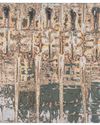
Demonstrators by Krishna Reddy
1968 Multicolour viscosity, Print on paper

Notes from Grief Camp
Every summer, more than a hundred children come together to spend a weekend swimming, climbing and canoeing. They also learn to deal with death

Six Places Cheese Lovers Should Visit
Ancient caves, monasteries, and other must-sees for fromage fans
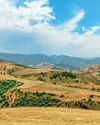
THE LAND OF SUPERCEN TENARIANS
A remote region of Azerbaijan claims to have many extremely long-lived residents. What is their secret, or is it just a myth?
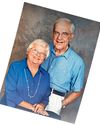
The Whistle Blowers
My grandparents had a distinctive way of communicating
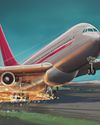
"THE NEXT AIRCRAFT WILL CRASH ON LANDING"
THE JET WAS ALMOST OUT OF FUEL. THE PILOTS' ONLY OPTION WAS A MANOEUVRE NO ONE HAD EVER ATTEMPTED.

The Secrets in our Genes
Genomic sequencing tests can reveal much about your unique physiology. But are they worth it?
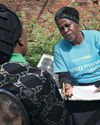
GOOD NEWS FROM AROUND THE WORLD
MENTAL HEALTH When her son was arrested last year, Tambudzai Tembo's mind went to dark thoughts of suicide.

Into the Inferno
A gas station owner has seconds to react when a car crashes into a gas pump

THE CLIMATE CHANGERS
THESE PLACES ARE LEADING THE WAY TO A FUTURE FREE OF FOSSIL FUELS